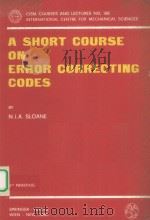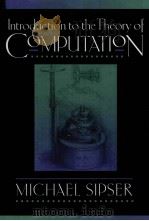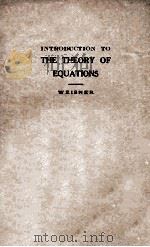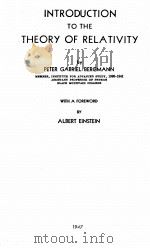《Introduction to the theory of error-correcting codes Part II》
| 作者 | F. J. Mac Williams ; N. J. A. 编者 |
|---|---|
| 出版 | Wiley |
| 参考页数 | 762 |
| 出版时间 | 1982(求助前请核对) 目录预览 |
| ISBN号 | 0444850104 — 求助条款 |
| PDF编号 | 813867358(仅供预览,未存储实际文件) |
| 求助格式 | 扫描PDF(若分多册发行,每次仅能受理1册) |
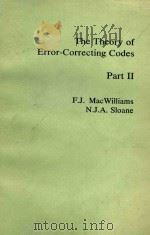
Chapter 1. Linear codes1
Chapter 2. Nonlinear codes,Hadamard matrices,designs and the Golay code38
Chapter 3. An introduction to BCH codes and finite fields80
Chapter 4. Finite fields93
Chapter 5. Dual codes and their weight distribution125
Chapter 6. Codes,designs and perfect codes155
Chapter 7. Cyclic codes188
Chapter 8. Cyclic codes (contd.): Idempotents and Mattson-Solomon polynomials216
Chapter 9. BCH codes257
Chapter 10. Reed-Solomon and Justesen codes294
Chapter 11. MDS codes317
Chapter 12. Alternant,Goppa and other generalized BCH codes332
Chapter 13.Reed-Muller codes370
1.Introduction370
2.Boolean functions370
3.Reed-Muller Codes373
4.RM codes and geometries377
5.The minimum weight vectors generate the code381
6.Encoding and decoding (Ⅰ)385
7.Encoding and decoding (Ⅱ)388
8.Other geometrical codes397
9.Automorphism groups of the RM codes398
10.Mattson-Solomon polynomials of RM codes401
11.The action of the general affine group on Mattson-Solomon polynomials402
Notes on Chapter 13403
Chapter 14.First-order Reed-Muller codes406
1.Introduction406
2.Pseudo-noise sequences406
3.Cosets of the first-order Reed-Muller code412
4.Encoding and decoding ? (l,m)419
5.Bent functions426
Notes on Chapter 14431
Chapter 15.Second-order Reed-Muller,Kerdock and Preparata codes433
1.Introduction433
2.Weight distribution of second-order Reed-Muller codes434
3.Weight distribution of arbitrary Reed-Muller codes445
4.Subcodes of dimension 2m of ?(2,m)* and ?(2,m)448
5.The Kerdock code and generalizations453
6.The Preparata code466
7.Goethals’ generalization of the Preparata codes476
Notes on Chapter 15477
Chapter 16.Quadratic-residue codes480
1.Introduction480
2.Definition of quadratic-residue codes481
3.Idempotents of quadratic-residue codes484
4.Extended quadratic-residue codes488
5.The automorphism group of QR codes491
6.Binary quadratic residue codes494
7.Double circulant and quasi-cyclic codes505
8.Quadratic-residue and symmetry codes over GF(3)510
9.Decoding of cyclic codes and others512
Notes on Chapter 16518
Chapter 17.Bounds on the size of a code523
1.Introduction523
2.Bounds on A(n,d,w)524
3.Bounds on A(n,d)531
4.Linear programming bounds535
5.The Griesmer bound546
6.Constructing linear codes; anticodes547
7.Asymptotic bounds556
Notes on Chapter 17566
Chapter 18.Methods for combining codes567
1.Introduction567
Part Ⅰ: Product codes and generalizations568
2.Direct product codes568
3.Not all cyclic codes are direct products of cyclic codes571
4.Another way of factoring irreducible cyclic codes573
5.Concatenated codes: the * construction575
6.A general decomposition for cyclic codes578
Part Ⅱ: Other methods of combining codes581
7.Methods which increase the length581
7.1 Construction X: adding tails to the codewords581
7.2 Construction X4: combining four codes584
7.3 Single- and double-error-correcting codes586
7.4 The |a + x|b + x|a + b + x| construction587
7.5 Piret’s construction588
8.Constructions related to concatenated codes589
8.1 A method for improving concatenated codes589
8.2 Zinov’ev’s generalized concatenated codes590
9.Methods for shortening a code592
9.1 Constructions Y 1-Y4592
9.2 A construction of Helgert and Stinaff593
Notes on Chapter 18594
Chapter 19.Self-dual codes and invariant theory596
1.Introduction596
2.An introduction to invariant theory598
3.The basic theorems of invariant theory607
4.Generalizations of Gleason’s theorems617
5.The nonexistence of certain very good codes624
6.Good self-dual codes exist629
Notes on Chapter 19633
Chapter 20.The Golay codes634
1.Introduction634
2.The Mathieu group M24636
3.M24 is five-fold transitive637
4.The order of M24 is 24.23.22.21.20.48638
5.The Steiner system S(5,8,24) is unique641
6.The Golay codes ?23 and ?24 are unique646
7.The automorphism groups of the ternary Golay codes647
8.The Golay codes ?11 and ?12 are unique648
Notes on Chapter 20649
Chapter 21.Association schemes651
1.Introduction651
2.Association schemes651
3.The Hamming association scheme656
4.Metric schemes659
5.Symplectic forms661
6.The Johnson scheme665
7.Subsets of association schemes666
8.Subsets of symplectic forms667
9.t-designs and orthogonal arrays670
Notes on Chapter 21671
Appendix A.Tables of the best codes known673
1.Introduction673
2.Figure 1,a small table of A(n,d)683
3.Figure 2,an extended table of the best codes known690
4.Figure 3,a table of A(n,d,w)691
Appendix B.Finite geometries692
1.Introduction692
2.Finite geometries,PG(m,q) and EG(m,q)692
3.Properties of PG(m,q) and EG(m,q)697
4.Projective and affine planes701
Notes on Appendix B702
Bibliography703
Index757
1982《Introduction to the theory of error-correcting codes Part II》由于是年代较久的资料都绝版了,几乎不可能购买到实物。如果大家为了学习确实需要,可向博主求助其电子版PDF文件(由F. J. Mac Williams ; N. J. A. 1982 Wiley 出版的版本) 。对合法合规的求助,我会当即受理并将下载地址发送给你。
高度相关资料
-
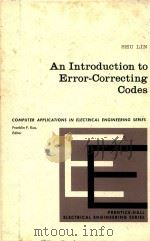
- An introduction to error-correcting codes
- 1970 Prentice-Hall
-
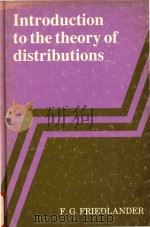
- Introduction to the theory of distributions
- 1982 Cambridge University Press
-
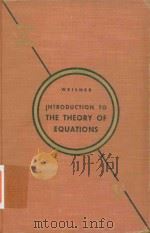
- Introduction to the theory of equations
- 1938 The Macmillan company
-
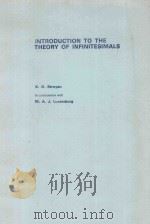
- INTRODUCTION TO THE THEORY OF INFINITESIMALS
- 1976 ACADEMIC PRESS
-
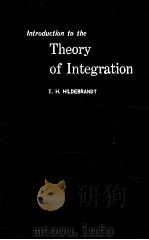
- Introduction to the theory of integration
- 1963 Academic Press
-

- INTRODUCTION TO THE THEORY OF DISTRIBUTIONS
- 1952 UNIVERSITY OF TORONTO PRESS
-

- INTRODUCTION TO THE THEORY OF NUMBERS
- 1929 THE UNIVERSITY OF CHICAGO PRESS
-
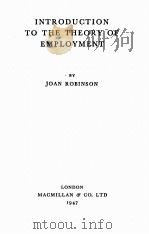
- INTRODUCTION TO THE THEORY OF EMPLOYMENT
- 1947 MACMILLAN AND CO. LTD.
-
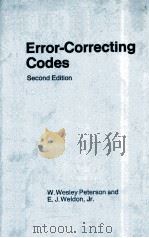
- ERROR-CORRECTING CODES SECOND EDITION
- 1961 MONOTYPE TIMES NEW ROMAN
-

- INTRODUCTION TO THE THEORY OF RELATIVITY
- 1950 CHIAO DAH BOOK SERVICE
提示:百度云已更名为百度网盘(百度盘),天翼云盘、微盘下载地址……暂未提供。➥ PDF文字可复制化或转WORD
